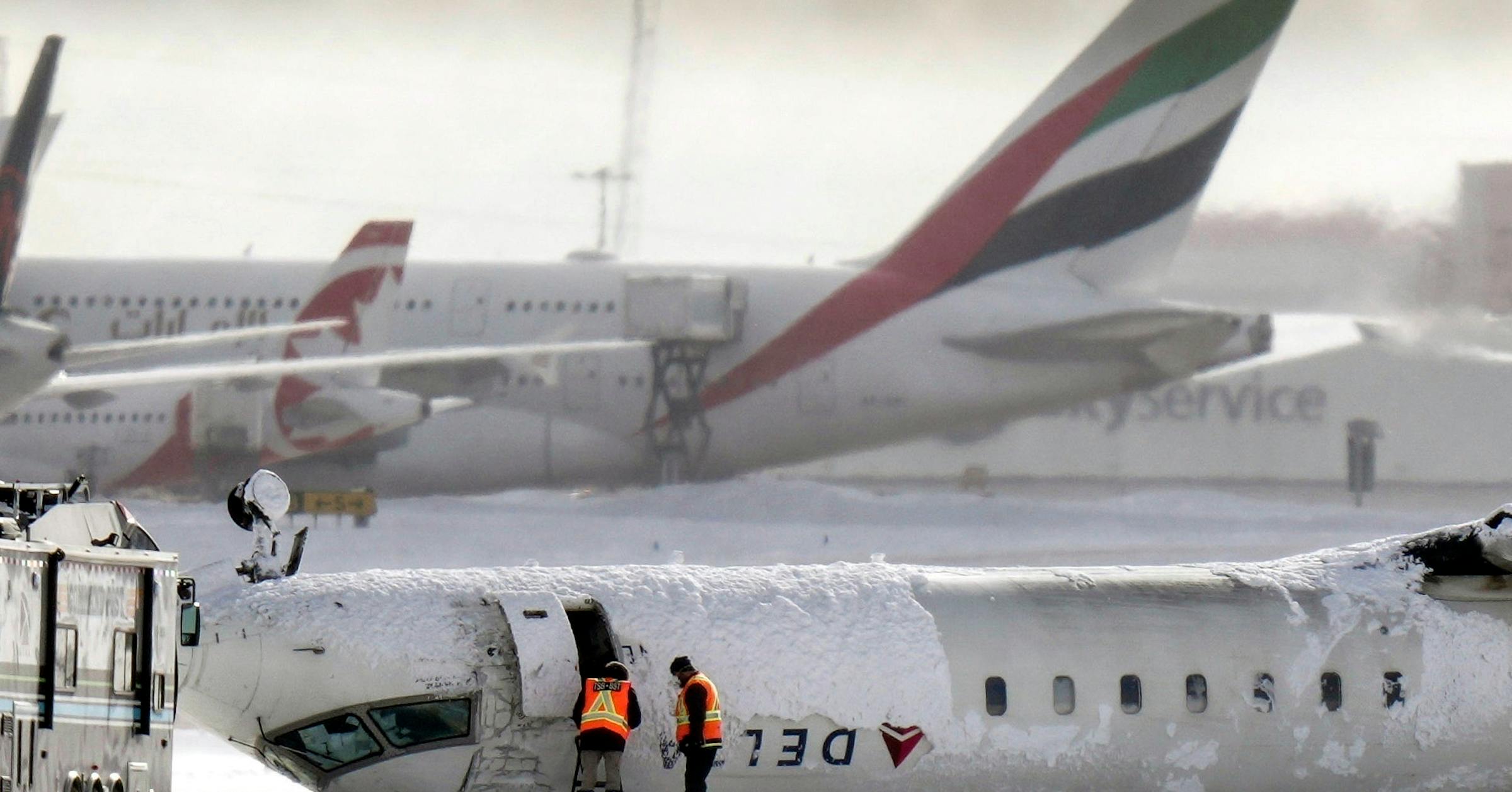The preliminary report from the Canadian Transportation Safety Board details the sequence of events during the Delta crash in Toronto in February. The enhanced ground proximity warning system detected a high descent rate less than three seconds before touchdown. Just under one second before landing, the aircraft’s airspeed was 134 knots, with a bank angle of 7.1 degrees to the right and a pitch of 1 degree nose up. The descent rate at that moment was recorded at 1,110 feet per minute. Upon contact with the runway, the plane banked 7.5 degrees to the right, causing a component called a “side-stay” on the right landing gear to fracture and retract. The plane slid along runway 23, rolling to the right until it flipped upside-down, shearing off a large section of the tail. It eventually came to rest inverted on runway 15L. Inside the plane, passengers and crew were suspended upside-down by their seat belts. Some injuries occurred when passengers released their seat belts to escape the burning aircraft. The flight deck door was damaged, preventing the flight crew from exiting through it. The pilots used the cockpit ceiling escape hatch instead, with assistance from a passenger to egress. — news from Star Tribune
